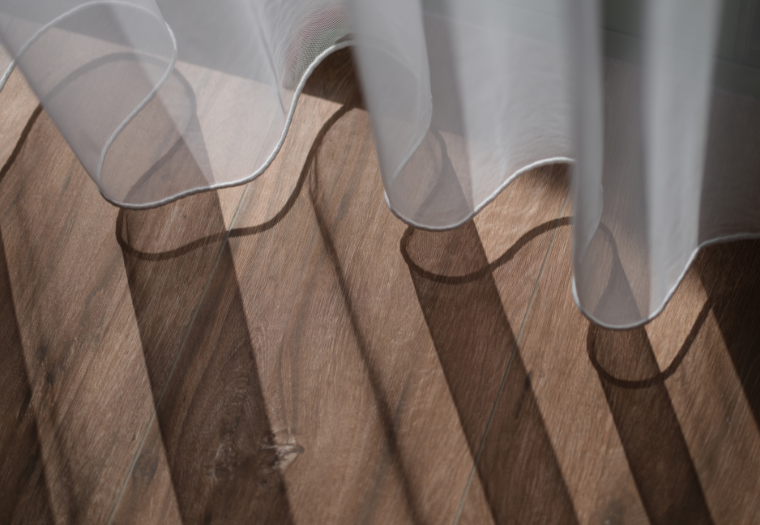 Ironing is one of the important aspects of caring for tulle. It is a delicate textile that requires special attention. Here are some key recommendations for ironing tulle:
Ironing is one of the important aspects of caring for tulle. It is a delicate textile that requires special attention. Here are some key recommendations for ironing tulle:
- Pay attention to the label. This will help you determine if the items can be ironed.
- Set the iron to the lowest temperature. Tulle is made from delicate fabric, so it is recommended to exert effort to avoid thermal damage.
- Use the steam function. Steam will help soften the fabric and make the ironing process more efficient and safe. However, be cautious and avoid applying excessive steam to prevent stains or damage.
- Use a fabric pad between the iron and the fabric. This will help protect the tulle from direct contact with the hot surface of the iron and reduce the risk of damage.
- Avoid pressing too hard with the iron. A light touch is sufficient to smooth out the fabric. Applying too much pressure may leave iron marks or even harm the tulle.
- Handle the tulle with smooth movements. Gentle and soft ironing motions will help soften the tulle and remove wrinkles. Avoid sharp movements and stretching to prevent fabric damage.
Caring for tulle requires patience and caution. By following these tips, you will be able to preserve the beauty and flawless appearance of your tulle. Remember that each fabric may have its own specific characteristics, so it is important to refer to the manufacturer's instructions or consult professionals if you have any doubts.
Types of Tulle and Ironing Specifics for Each
There are different types of tulle, each with its own ironing specifics. Here are some of them:
- Smooth tulle: This is the most common type of tulle, characterized by the absence of pronounced patterns or textures. Ironing smooth tulle usually does not present any special difficulties. Follow the general recommendations described above and use a low iron temperature.
- Textured tulle: This type of tulle has distinct patterns or textures on its surface. When ironing textured tulle, it is recommended to use a low temperature and iron from the reverse side. This will help avoid damage or deformation of the patterns.
- Embroidered tulle: Decorated with embroidery or appliqué, embroidered tulle requires extra care during ironing to avoid damaging the embroidery or appliqué. It is advisable to use a low temperature, iron from the reverse side, and use a fabric pad if necessary.
- Lace tulle: Lace tulle features openwork patterns and a non-solid structure. Ironing lace tulle can be challenging due to delicate patterns. It is recommended to use a low temperature, iron from the reverse side, and use a fabric pad to prevent damage to the lace.
Remember that each type of tulle has its own characteristics, so it is important to refer to the manufacturer's instructions and perform a test ironing on a small inconspicuous area before treating the entire fabric.
Materials and Ironing Specifics
Various materials are used in the production of modern tulle, each with its own ironing specifics. Here are some popular materials and recommendations for ironing them:
- Polyester: Polyester fabric is one of the most common materials used in tulle. It is lightweight, durable, and virtually wrinkle-free. When ironing polyester tulle, it is recommended to use a low iron temperature and iron from the reverse side. Be cautious not to damage the material with high heat.
- Cotton: Cotton tulle has a natural texture and good breathability. When ironing cotton tulle, use a medium iron temperature. Iron the fabric from the reverse side and avoid leaving the iron in one place for too long to prevent marks from forming.
- Chiffon: Chiffon tulle has a lightweight and transparent structure. When ironing chiffon tulle, use a low iron temperature and handle the fabric with extreme care to avoid damage or deformation.
- Organza: Tulle made from organza has a stiff and transparent texture. When ironing organza tulle, use a low iron temperature and iron from the reverse side. Be careful when working with organza to avoid damage and the formation of wrinkles.
- Satin: Satin tulle is characterized by a smooth and shiny surface. When ironing satin tulle, it is recommended to use a low or medium iron temperature and iron from the reverse side or with the help of a fabric pad to maintain its shine and prevent marks from appearing.
It is important to remember that each material may have its own characteristics, so it is advisable to check the instructions on the tulle label before ironing or perform a test on a small inconspicuous area of the fabric. Also, monitor the iron's temperature and exercise caution to avoid damage and preserve the beauty of the tulle.
Read about how to properly wash tulle HERE.
